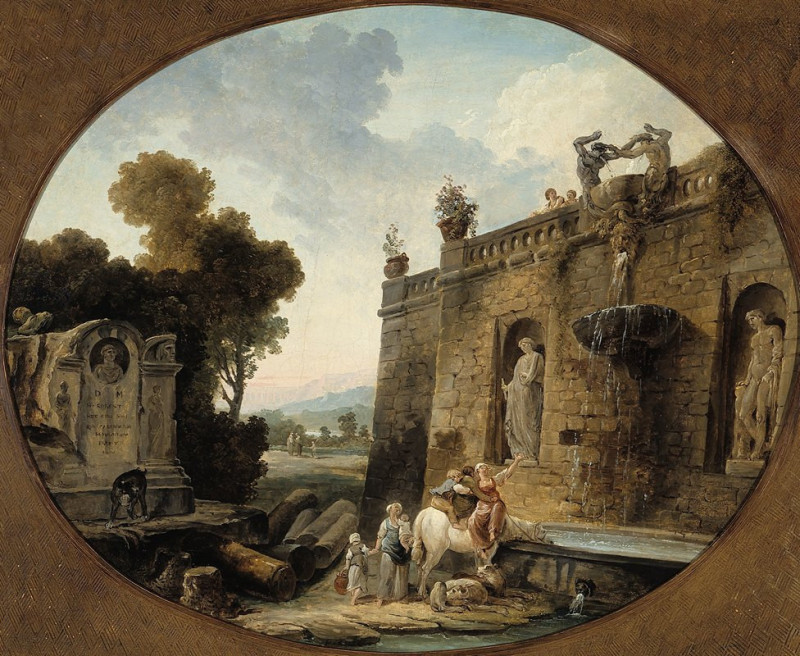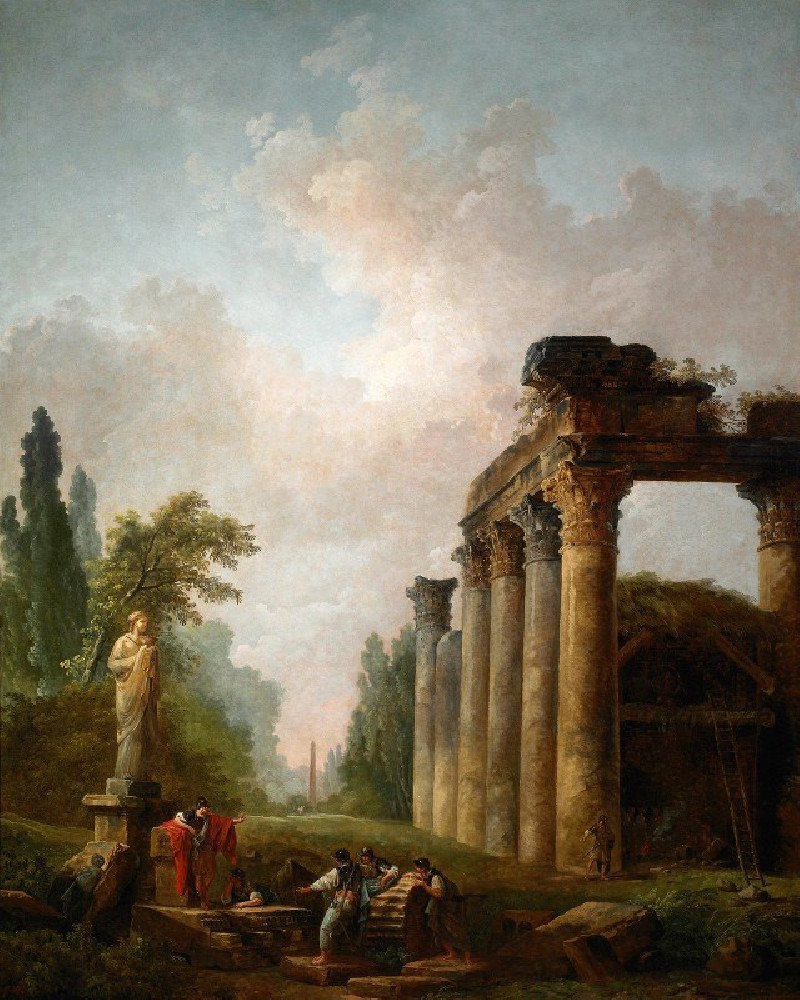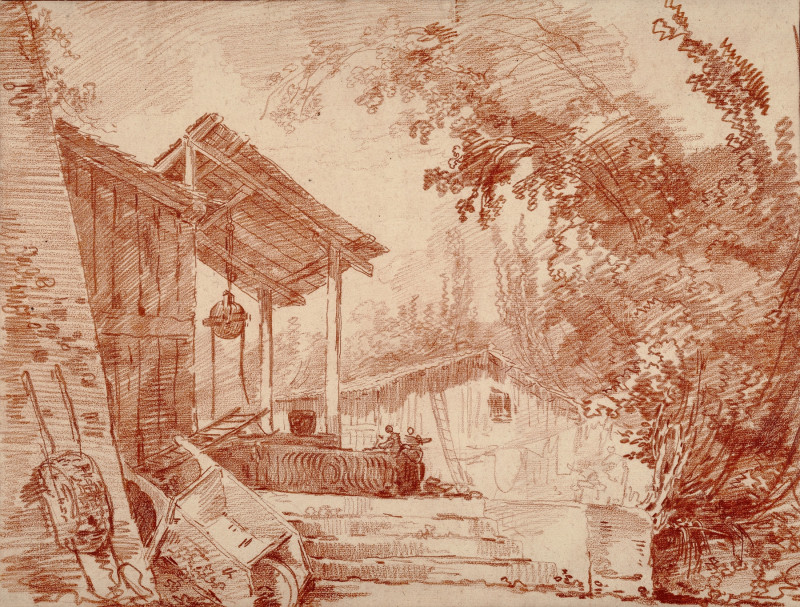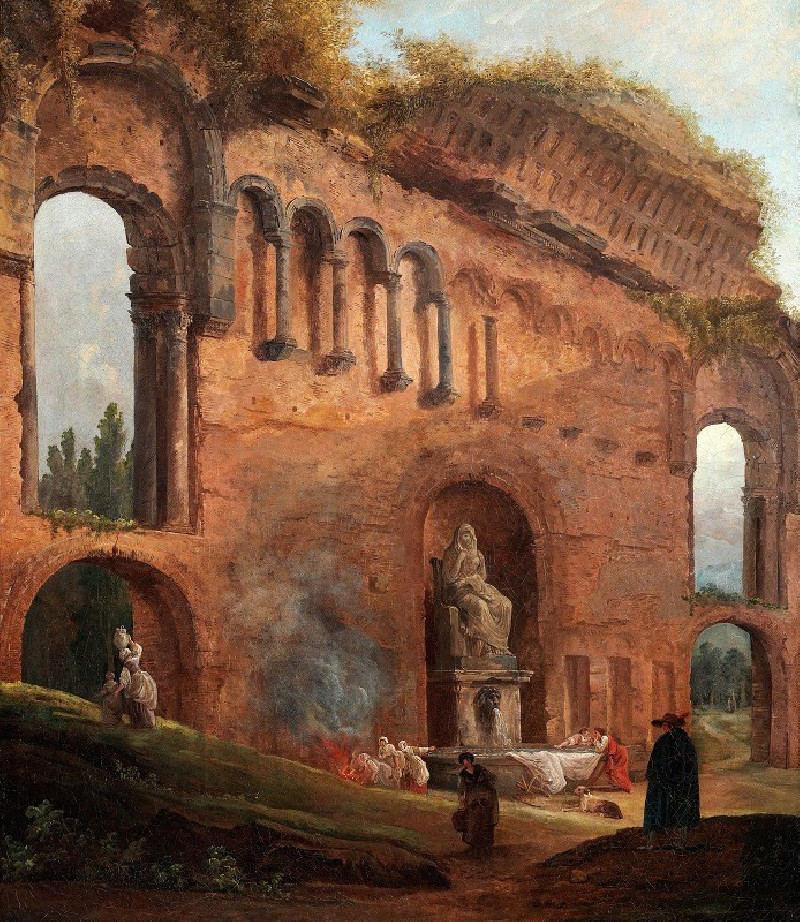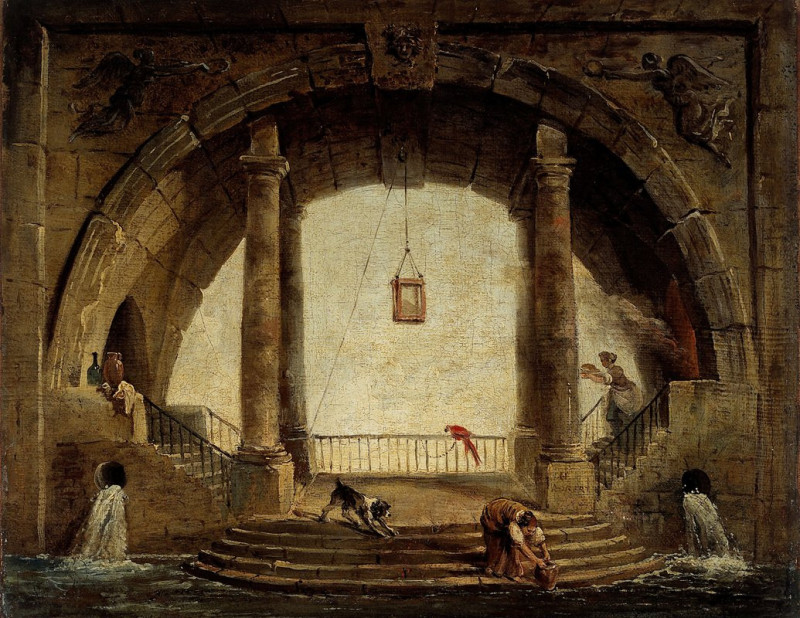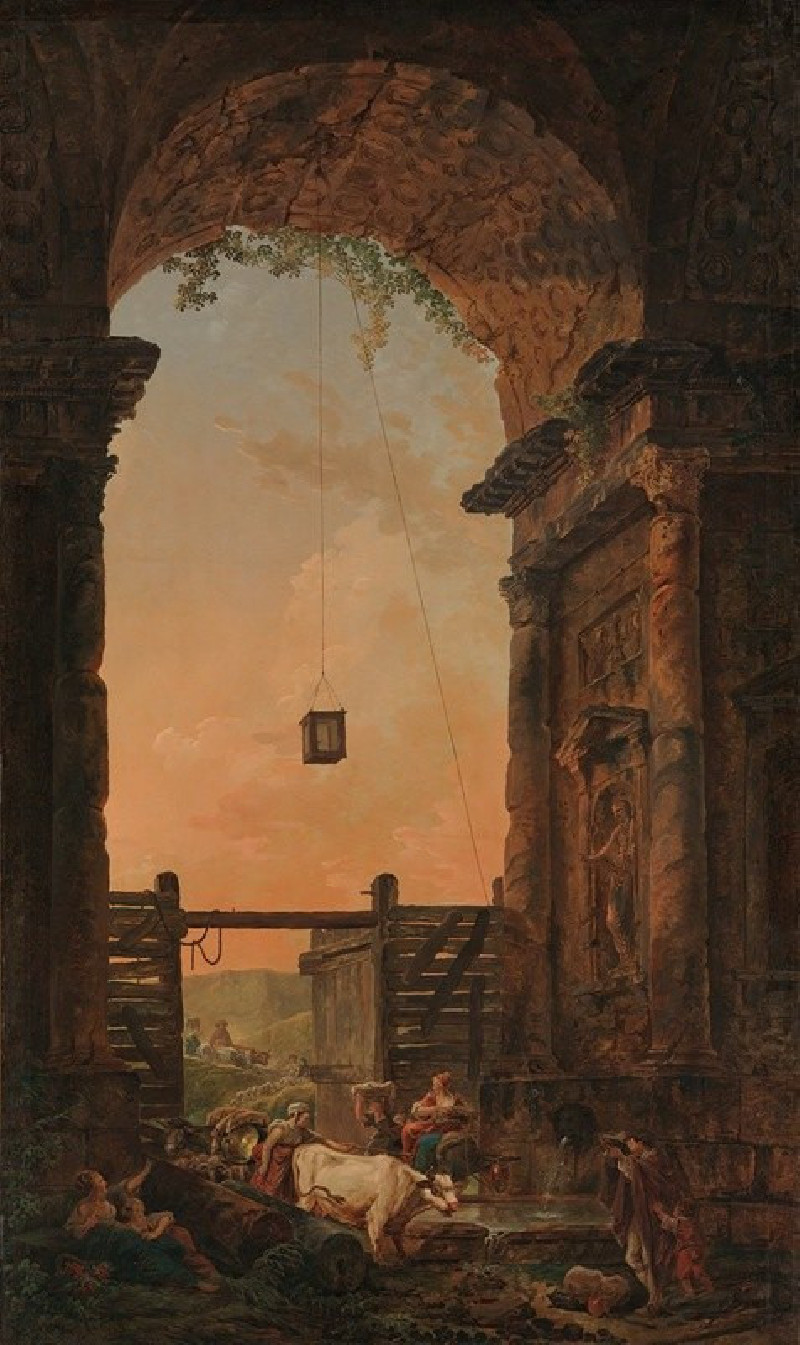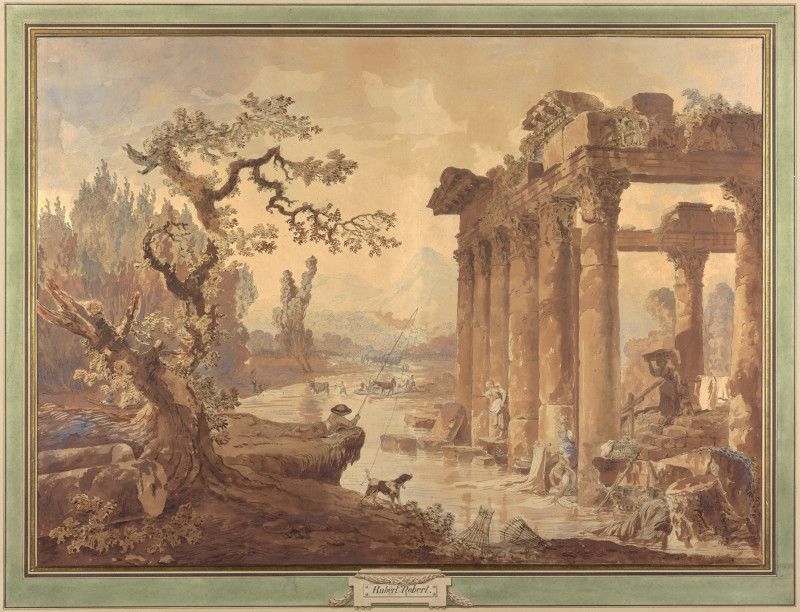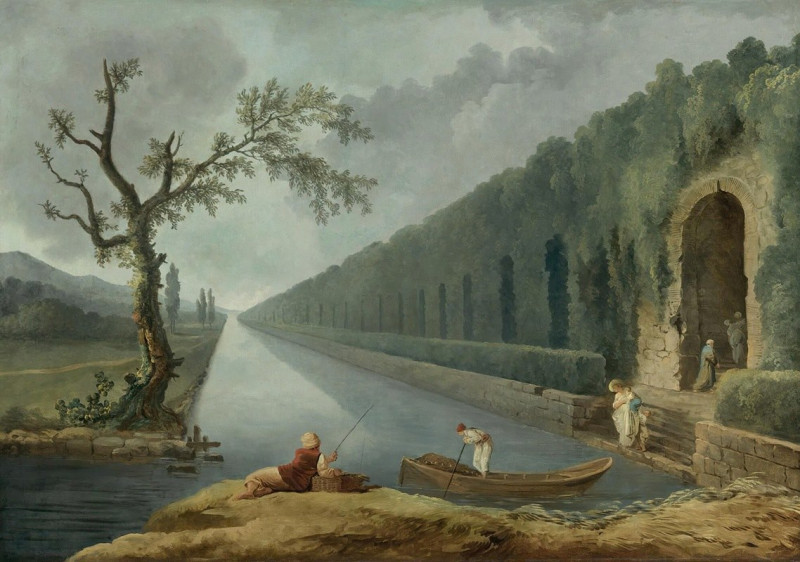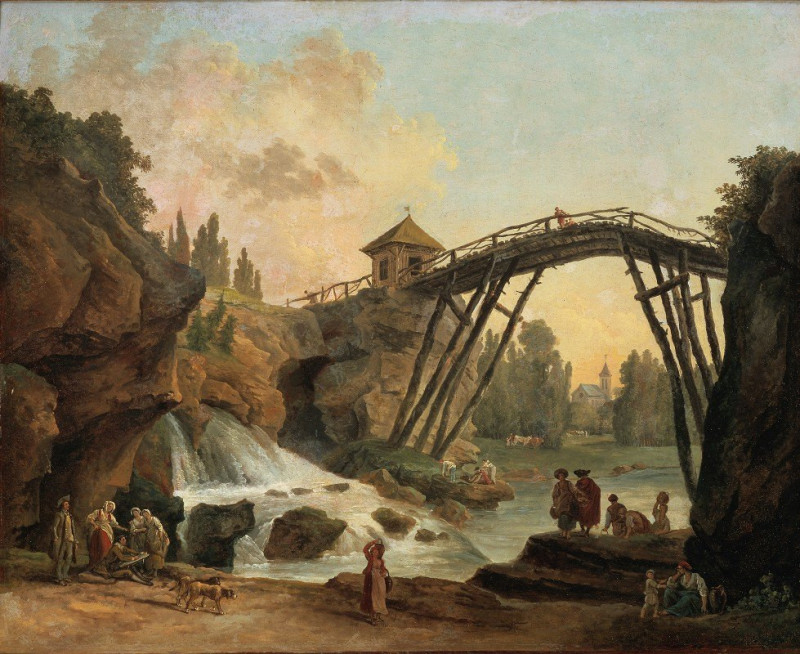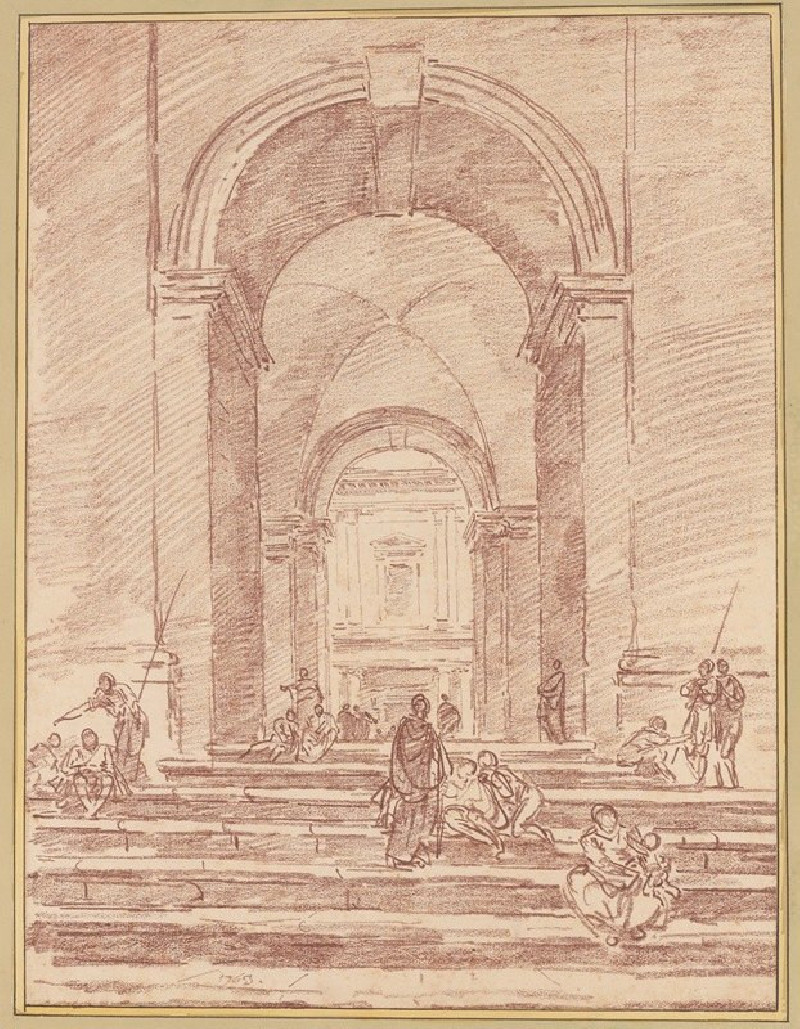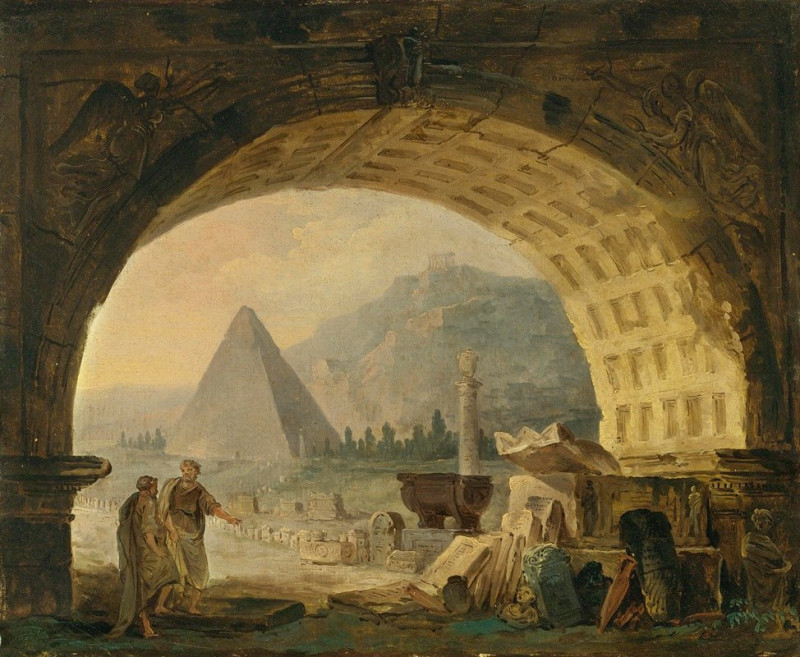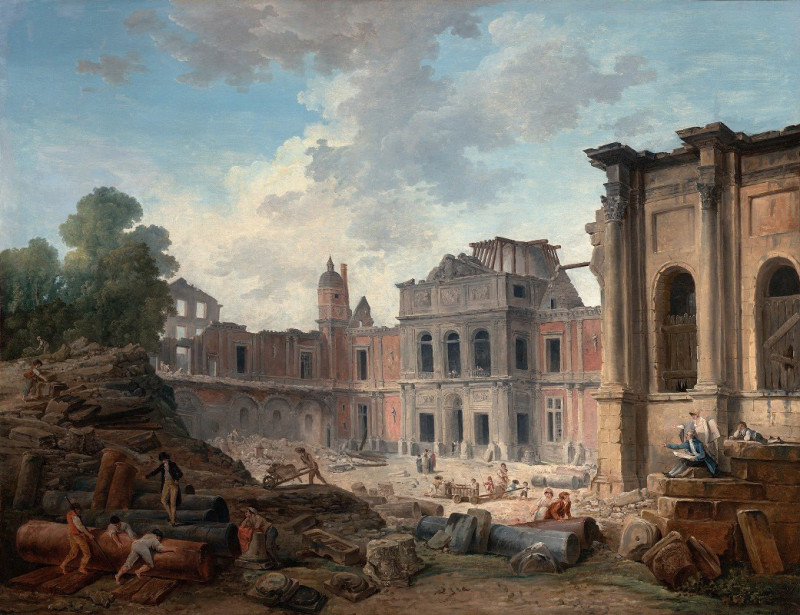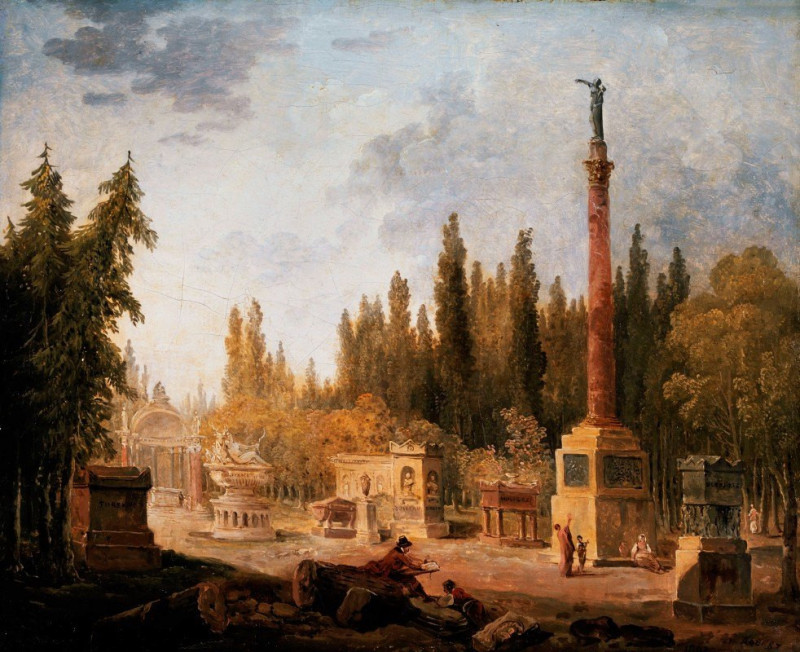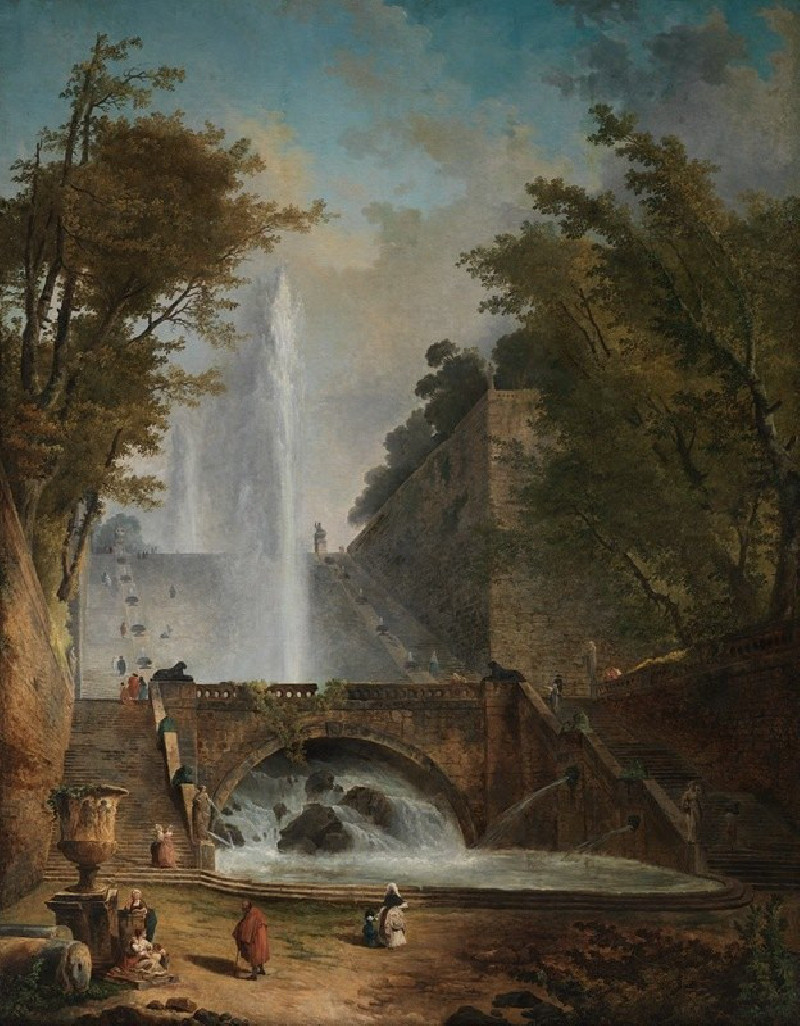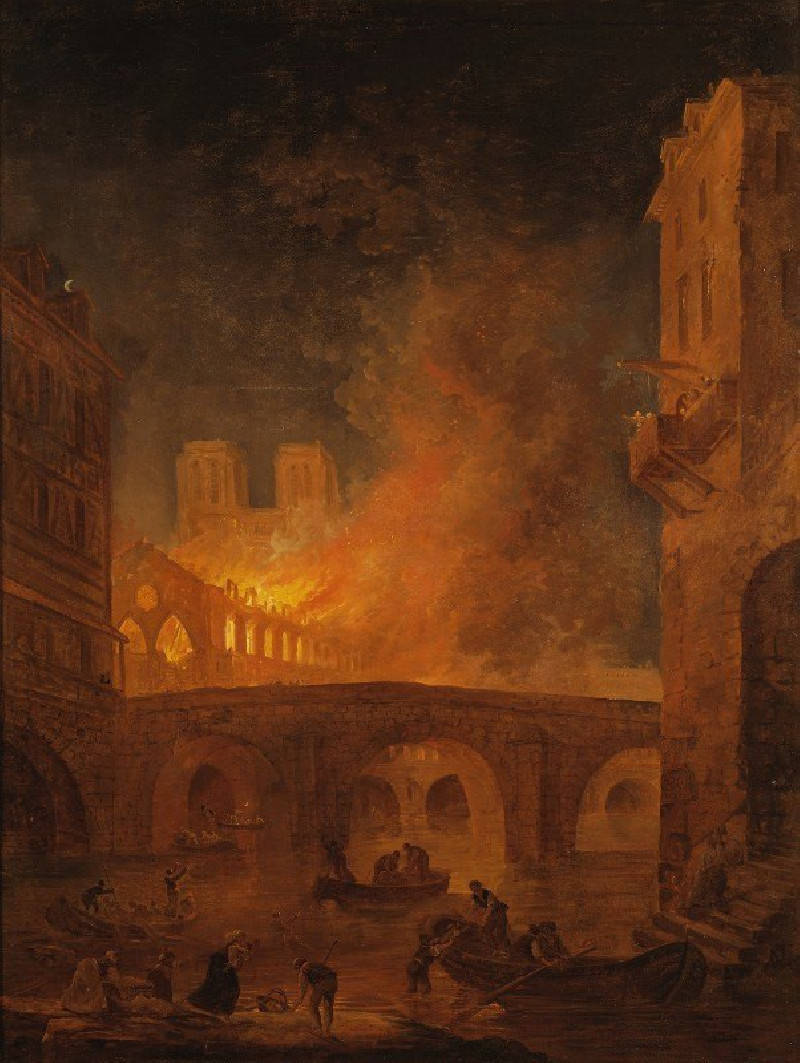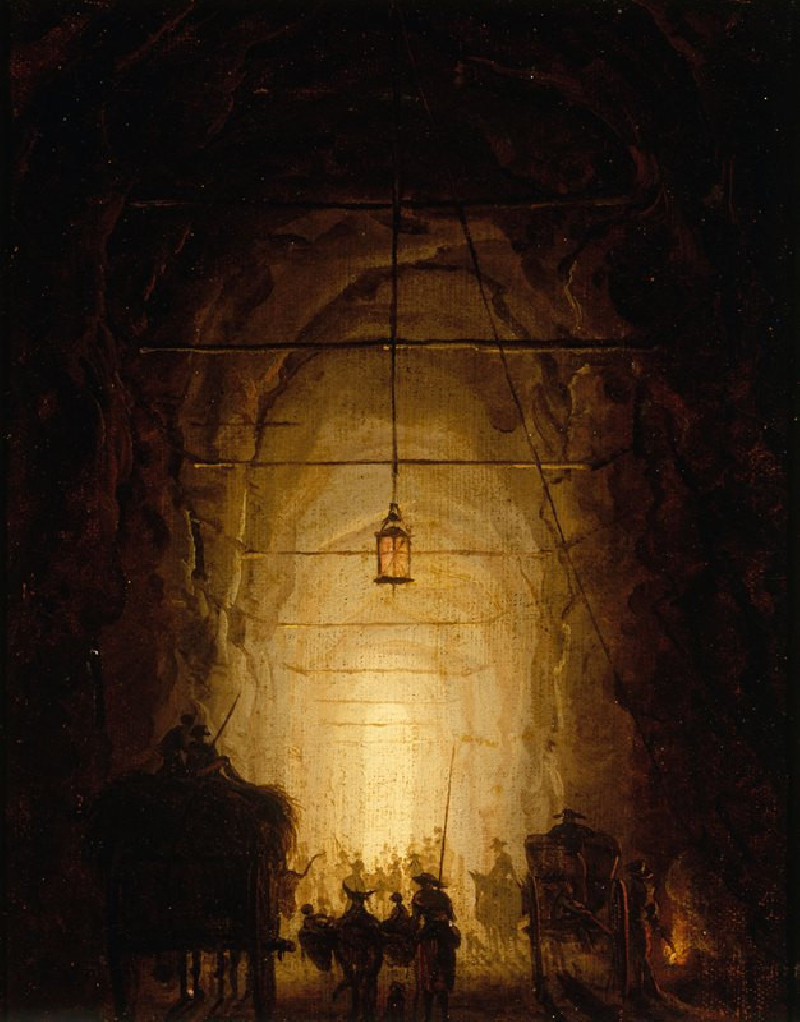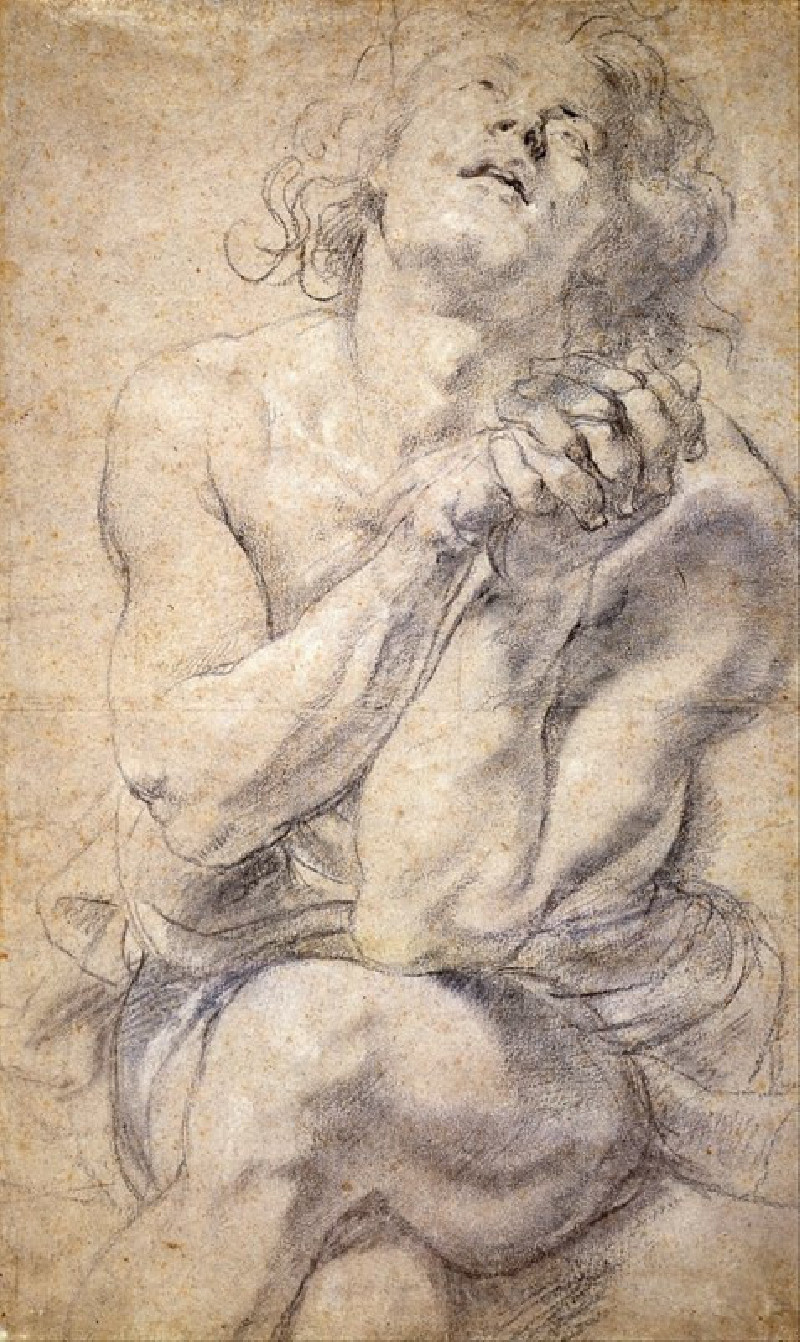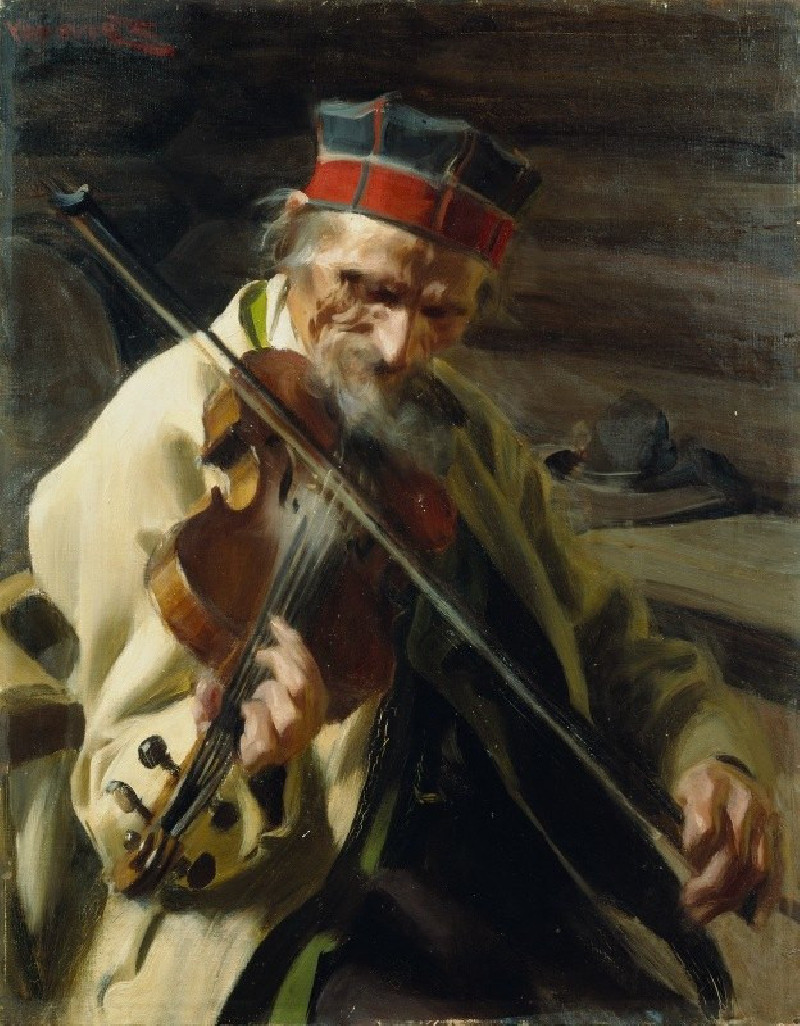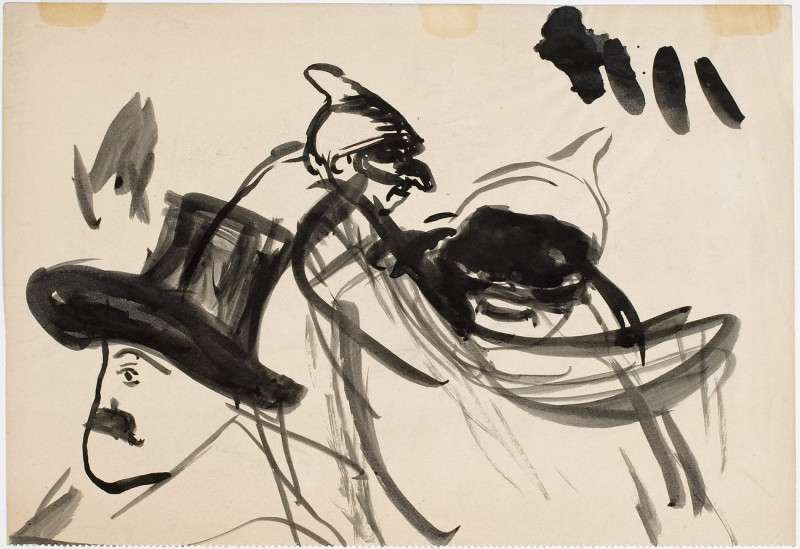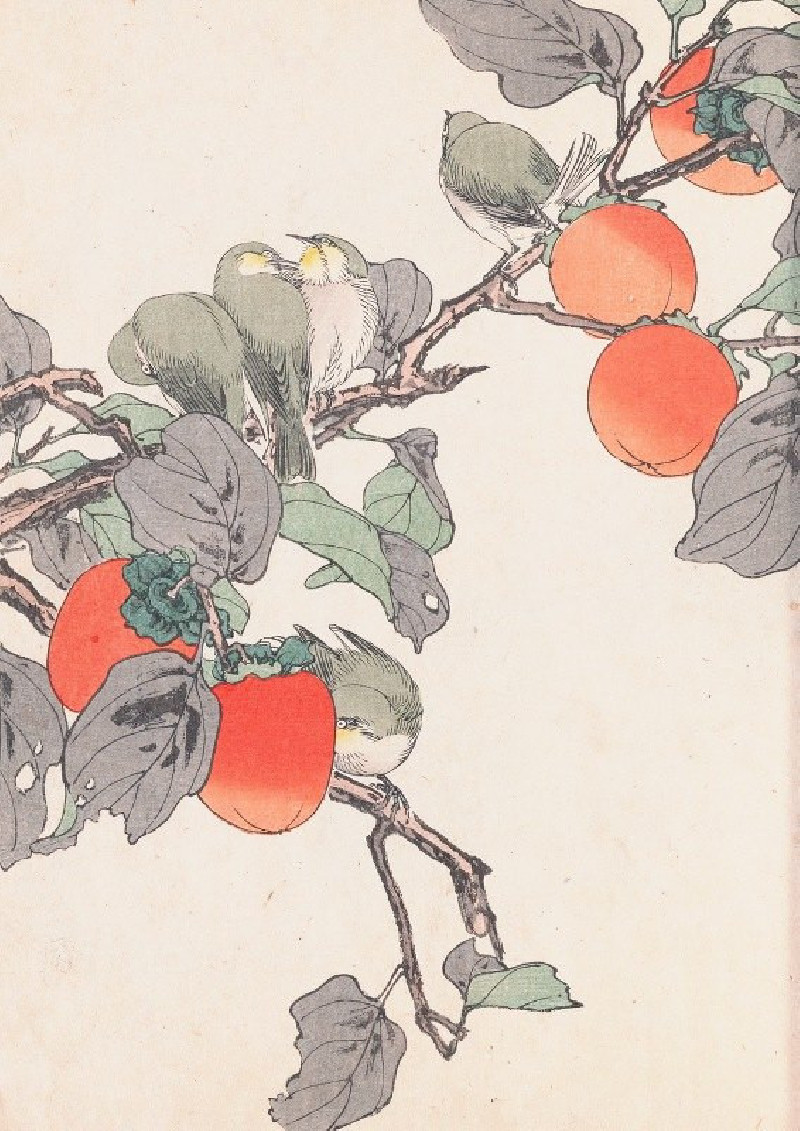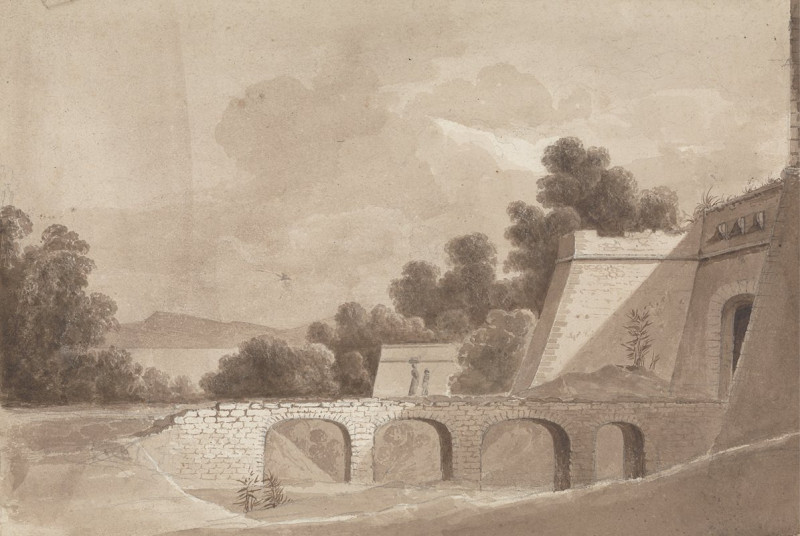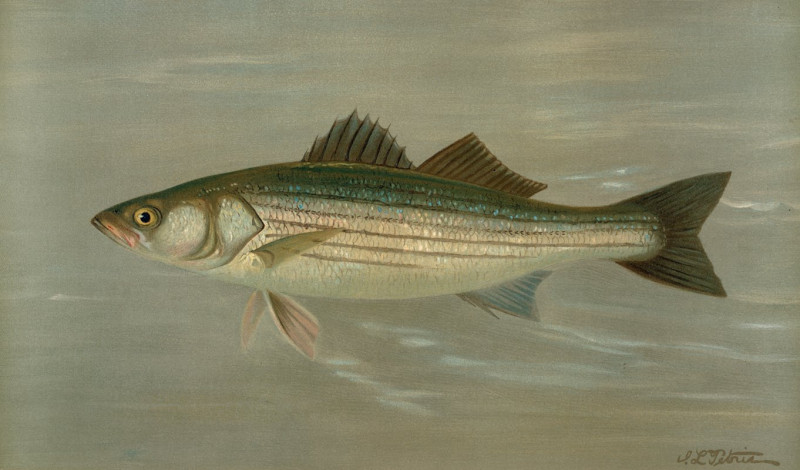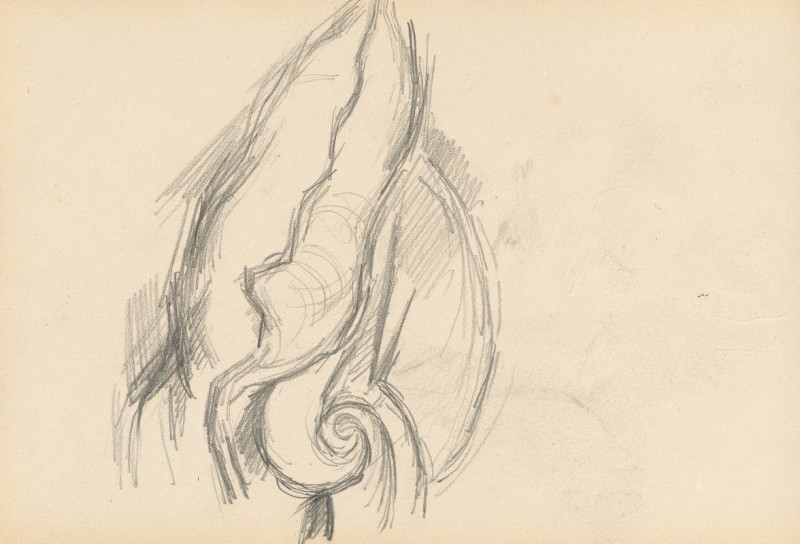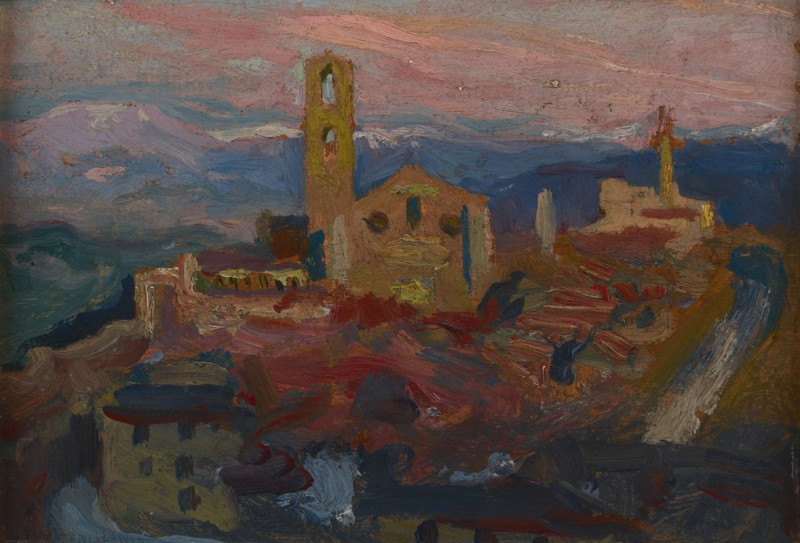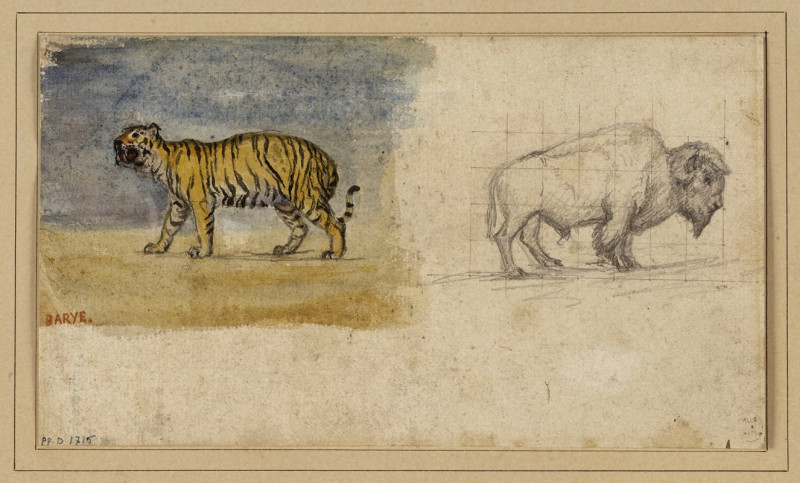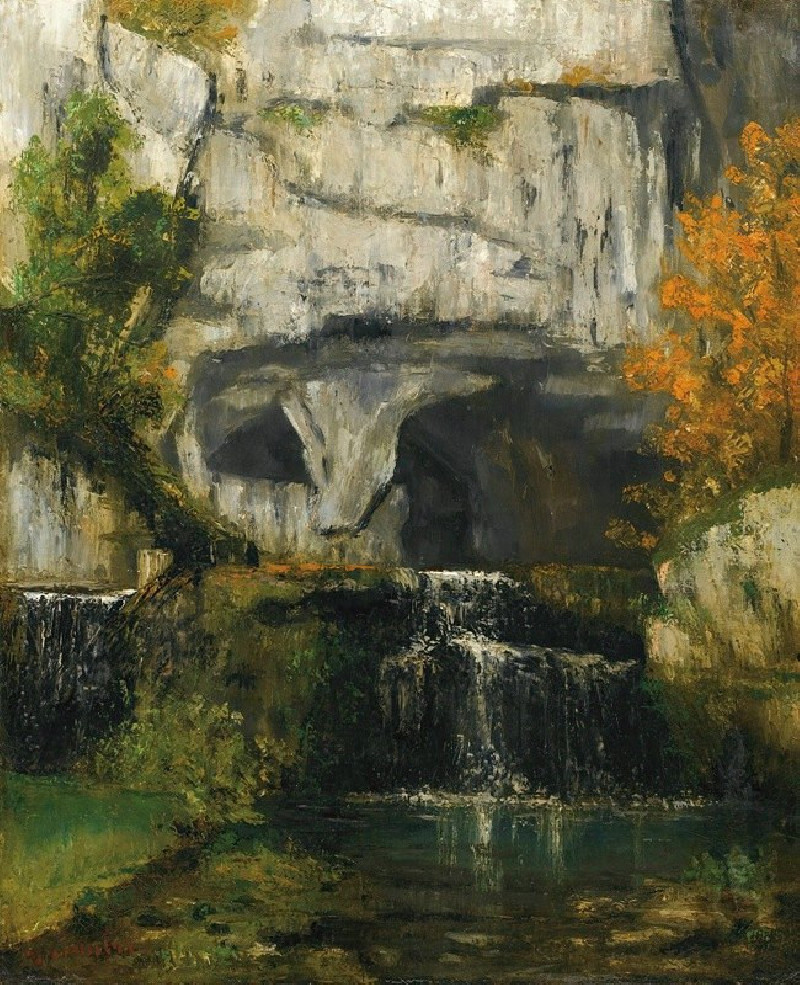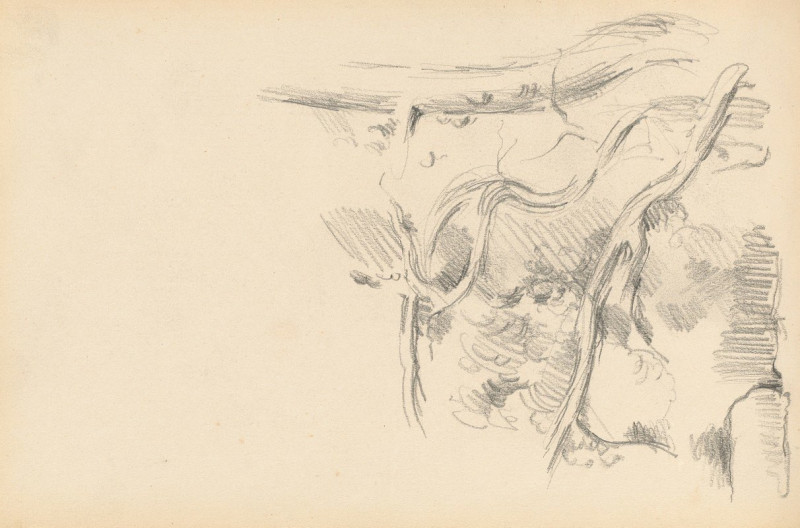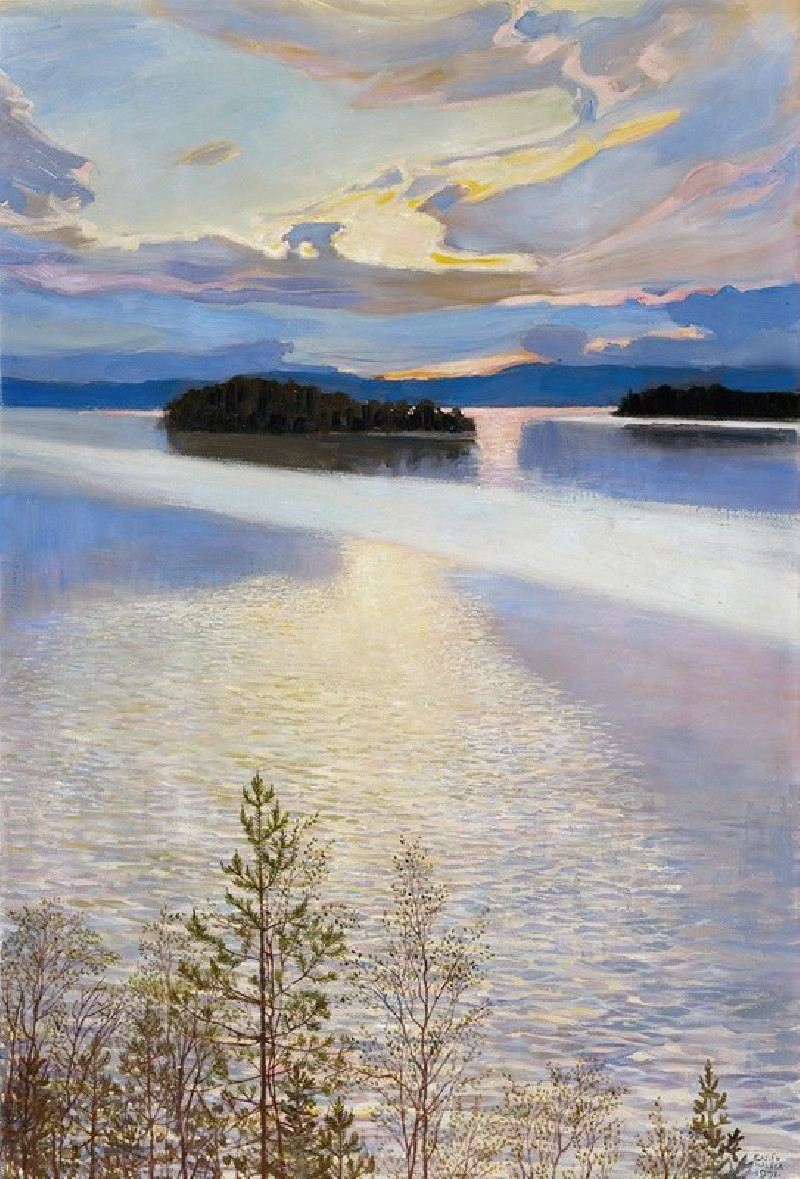Equestrian Statue of Marcus Aurelius (1757)
Technique: Giclée quality print
Recommended by our customers
More about this artwork
Hubert Robert’s evocative painting, "Equestrian Statue of Marcus Aurelius," presents a compelling tableau of ruin and enduring legacy set against a backdrop of classical architecture. This oval painting, completed in 1757, captures an imagined landscape dominated by the monumental figure of Marcus Aurelius on horseback, an homage to the famous antique bronze statue which itself symbolizes the wisdom and dignity of the stoic philosopher-emperor.In Robert's rendering, the statue towers majestically over a scene of decayed grandeur. The surrounding structures, reminiscent of ancient Roman ruins, are depicted in a state of elegant dilapidation, suggesting the transient nature of empire and human endeavor. Below the dominant figure of the emperor, the painting teems with life: smaller figures, possibly contemporaries of the artist or echoes of the past, engage in various activities amidst the ruins. Some appear to be in active discussion, perhaps debating philosophical ideas, while others seem resigned to their fate, resting or in despair, overshadowed by the historical weight above them.Robert’s use of soft, subtle tones and the strategic play of light and shadow cast by the crumbling architecture evokes a sense of nostalgic melancholy. The ruins signify the passage of time and the eventual decline of all man-made creations, yet the stoic, upright posture of Marcus Aurelius on his horse emanates a timelessness and a reminder of enduring values in the face of temporal struggles.This painting not only exemplifies Robert’s fascination with ruins and the lessons of history, but also prompts reflection on the cycles of rise and fall that characterize human history, urging a contemplation of our place within this continuum.


